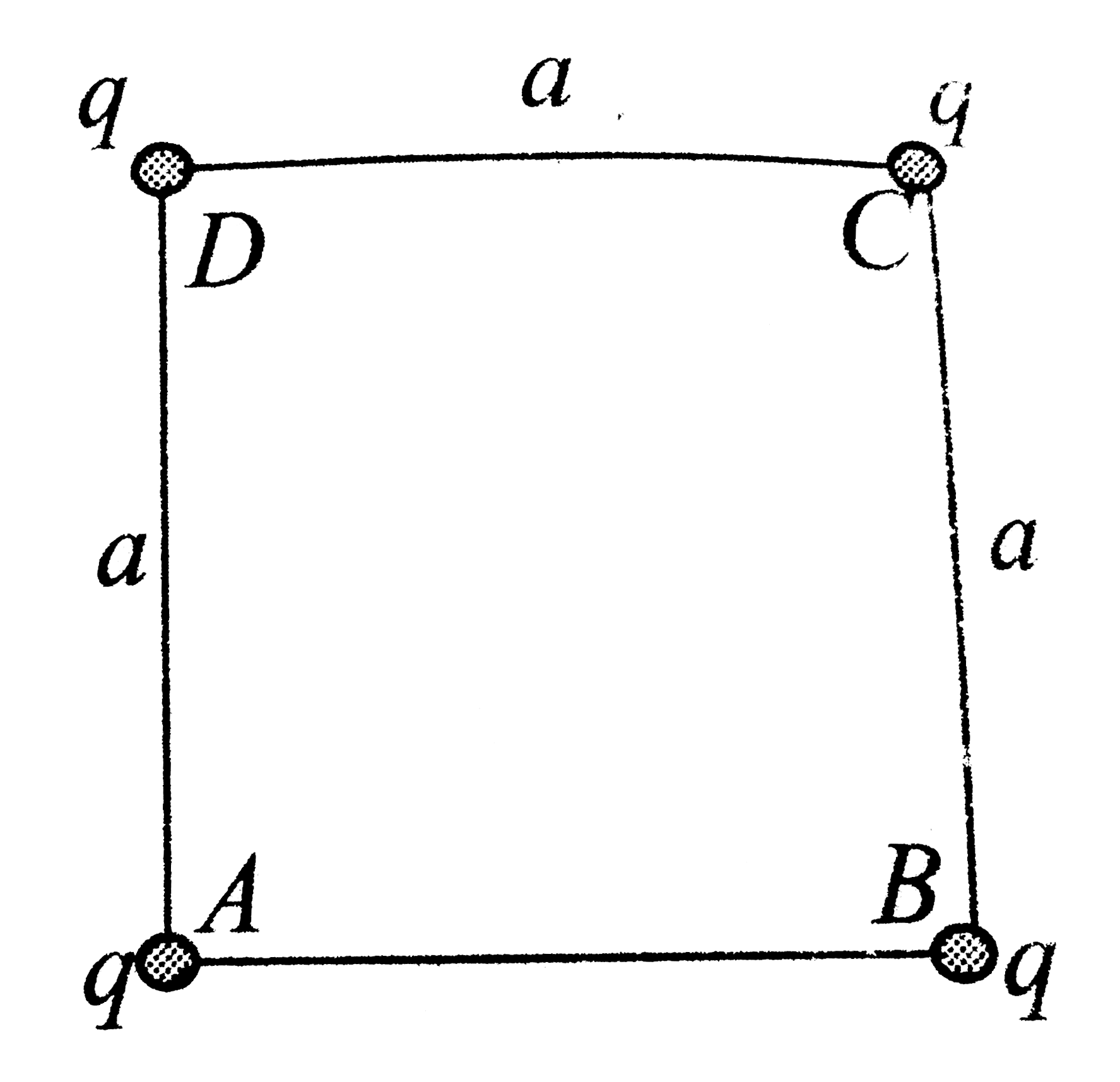In a regular polygon of n sides, each corner is at a distance r from the centre. Identical charges are placed at (n−1) corners. At the centre, the intensity is E and the potential is V. The ratio V/E has magnitude
m
r(n−1)
(n−1)/r
r(n−1)/n
The correct Answer is:B
To solve the problem, we need to find the ratio of electric potential V to electric field intensity E at the center of a regular polygon with n sides, where identical charges are placed at n−1 corners.
1. Understanding the Setup:
- We have a regular polygon with n sides.
- Identical charges q are placed at n−1 corners of the polygon.
- The distance from the center of the polygon to each corner is r.
2. Calculating Electric Potential V:
- The electric potential V at a point due to a point charge is given by:
V=kqr
where k is Coulomb's constant.
- Since there are n−1 charges, the total potential at the center due to these charges is:
V=(n−1)⋅kqr=k(n−1)qr
3. Calculating Electric Field Intensity E:
- The electric field E due to a point charge is given by:
E=kqr2
- However, since the charges are symmetrically placed, the electric fields due to charges at opposite corners will cancel each other out. Therefore, we need to consider the resultant electric field due to the n−1 charges.
- The resultant electric field E at the center can be calculated as:
E=k(n−1)qr2
(This is a simplification that assumes the contributions from the n−1 charges do not cancel out completely, which is valid for n>3.)
4. Finding the Ratio VE:
- Now we can find the ratio of potential to electric field:
VE=k(n−1)qrk(n−1)qr2
- Simplifying this gives:
VE=r2r=r(n−1)
5. Final Result:
- The magnitude of the ratio VE is:
VE=r(n−1)
Conclusion:
The final answer for the ratio VE is r(n−1).
- We have a regular polygon with n sides.
- Identical charges q are placed at n−1 corners of the polygon.
- The distance from the center of the polygon to each corner is r.
- The electric potential V at a point due to a point charge is given by:
V=kqr
where k is Coulomb's constant.
- Since there are n−1 charges, the total potential at the center due to these charges is:
V=(n−1)⋅kqr=k(n−1)qr
- The electric field E due to a point charge is given by:
E=kqr2
- However, since the charges are symmetrically placed, the electric fields due to charges at opposite corners will cancel each other out. Therefore, we need to consider the resultant electric field due to the n−1 charges.
- The resultant electric field E at the center can be calculated as:
E=k(n−1)qr2
(This is a simplification that assumes the contributions from the n−1 charges do not cancel out completely, which is valid for n>3.)
- Now we can find the ratio of potential to electric field:
VE=k(n−1)qrk(n−1)qr2
- Simplifying this gives:
VE=r2r=r(n−1)
- The magnitude of the ratio VE is:
VE=r(n−1)
The final answer for the ratio VE is r(n−1).
Topper's Solved these Questions
- ELECTROSTATICSBOOK - DC PANDEY ENGLISHCHAPTER - ELECTROSTATICSEXERCISE - Comprehension
36 Videos
- ELECTROSTATICSBOOK - DC PANDEY ENGLISHCHAPTER - ELECTROSTATICSEXERCISE - Matrix Matching
2 Videos
- ELECTROSTATICSBOOK - DC PANDEY ENGLISHCHAPTER - ELECTROSTATICSEXERCISE - Integer
17 Videos
- ELASTICITYBOOK - DC PANDEY ENGLISHCHAPTER - ELASTICITYEXERCISE - Medical entrances s gallery
21 Videos
- EXPERIMENTSBOOK - DC PANDEY ENGLISHCHAPTER - EXPERIMENTSEXERCISE - Subjective
15 Videos
Similar Questions
In a regular polygon of n sides, each corner is at a distance r from the centre. Identical charges each of magnitude q are placed at corners. The field at the centre is
View SolutionIn a regular hexagon each corner is at a distance .r. from the centre. Identical charges of magnitude .Q. are placed at 5 corners. The field at the centre is (K=14π∈0)
View SolutionIf a regular polygon of n sides has circum radius R and inradius r then each side of polygon is:
View SolutionABC is an equilateral triangle. Charges +q are placed at each corner. The electric field intensity at the centroid of triangle will be
View SolutionFour identical point charges q are placed at four corners of a square of side a. Find the potential energy of the charge system.
 .
.
View SolutionThe magnitude of electric intensity at a distance x from a charge q is E.An identical charge is placed at a distance 2x from it Then the magnitude of the force it experience is ..
View SolutionFour identical charges q are placed at the corners of a square of side a. Find the potential energy of one of the charges due to the remaining charges.
 .
.
View SolutionA charge Q is placed at each corner of a cube of side a. The potential at the centre of the cube is
View SolutionFour point charges are placed at the corners of a square of side l. Calculate potential at the centre of square.

View SolutionThe gravitational potential energy of a body at a distance r from the centre of earth is U. Its weight at a distance 2r from the centre of earth is
View Solution
